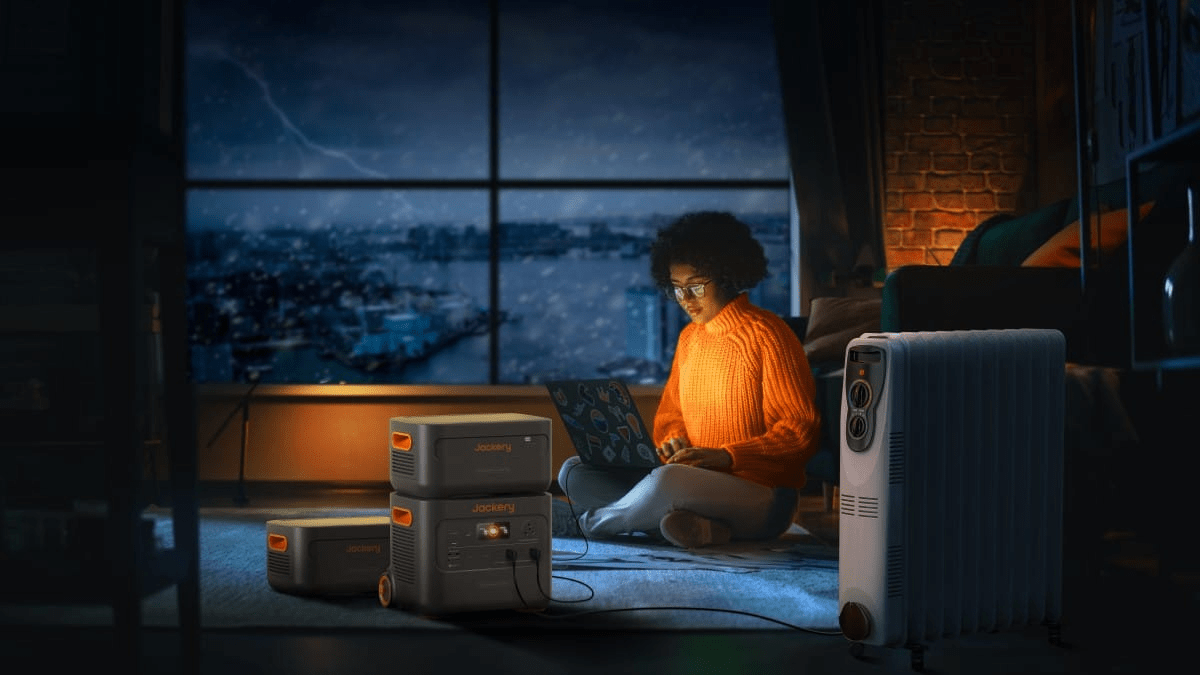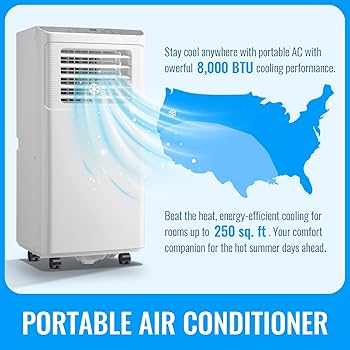Are you wondering how much electricity your portable air conditioner actually uses? You’re not alone.
Many people want to keep cool without facing a shocking electric bill. Knowing how much power your unit consumes can help you make smarter choices and save money. You’ll discover the facts about energy use, simple tips to reduce costs, and what to expect from your portable air conditioner.
Keep reading—you’ll find answers that make staying comfortable easier and more affordable.
Electricity Consumption Basics
Portable air conditioners have power ratingsmeasured in watts. This rating shows how much electricitythe unit uses while running. Higher wattage means more energy consumption.
BTUstands for British Thermal Unit. It tells how much cooling the unit provides. More BTUs mean the air conditioner cools a larger space.
| BTU Rating | Approximate Power Use (Watts) | Cooling Area (Square Feet) |
|---|---|---|
| 8,000 BTU | 900 | 150-250 |
| 10,000 BTU | 1,000 | 250-350 |
| 12,000 BTU | 1,200 | 350-450 |
On average, a portable air conditioner uses about 900 to 1,200 wattsper hour. Running it for one hour costs electricity like a few light bulbs. Usage depends on room size and temperature settings.

Credit: www.amazon.com
Factors Affecting Energy Use
Room sizegreatly affects energy use. A larger room needs more power to cool down. Smaller rooms require less electricity.
Temperature settingsalso impact usage. Lower temperatures make the unit work harder. Higher settings use less energy but may feel warmer.
Usage durationis key. Running the air conditioner for many hours increases electricity use. Shorter use saves energy.
Insulation and ventilationinfluence efficiency. Well-insulated rooms keep cool air inside. Poor ventilation or leaks cause the unit to run more.
Energy Efficiency Ratings
EER (Energy Efficiency Ratio)measures cooling output per watt used. Higher EER means better efficiency. SEER (Seasonal Energy Efficiency Ratio)shows efficiency over a cooling season. Both help compare models easily.
Energy Star certificationmeans a unit meets strict energy use rules. Certified models use less power, saving money and the environment.
Choose models with high EER/SEERand Energy Starlabels. These use less electricity but cool well. It helps lower your electric bill while keeping you cool.

Credit: hvac-temecula-murrieta.com
Cost To Run A Portable Ac
To calculate the electricity costof a portable air conditioner, multiply its power use (in kW) by the hours used and your electric rate. For example, a 1.5 kW unit running 8 hours daily at $0.12 per kWh costs about $1.44 per day.
Different cooling options use different amounts of electricity. Portable ACs are often less efficient than window units but more flexible than fans.
| Cooling Option | Power Use (kW) | Estimated Daily Cost ($) |
|---|---|---|
| Portable AC | 1.5 | 1.44 |
| Window AC | 1.0 | 0.96 |
| Fan | 0.05 | 0.06 |
Electricity use changes with the seasons. Hotter months mean more hours running the AC. Cooler months need less or no use. This affects your monthly electric bill a lot.
Tips To Reduce Energy Use
Set the temperature between 75°F and 78°Fto save energy. Cooler settings use more power.
Install the air conditioner where it gets good airflow. Avoid direct sunlight and blockages.
Clean or replace filters often. Dust and dirt make the unit work harder and use more electricity.
Use timers to run the unit only when needed. Smart controls help adjust cooling automatically.
Environmental Impact
Portable air conditioners use electricity, which affects the carbon footprint. The more electricity they use, the more greenhouse gasesare released. These gases cause global warming. Some models use less energy and have a smaller carbon footprint.
Choosing energy-efficientor eco-friendlymodels helps reduce environmental harm. Some units use natural refrigerantsthat are less harmful to the ozone layer. Using these can lower your impact on the planet.
Proper recycling and disposalof old portable ACs is very important. They contain chemicals that can harm the environment if not handled right. Many local centers accept old units for safe recycling. This helps keep toxic substances out of landfills.

Credit: www.jackery.com
Frequently Asked Questions
How Much Electricity Does A Portable Ac Use?
A portable air conditioner typically uses between 900 to 1,500 watts per hour. The exact consumption depends on its size and efficiency. To calculate monthly usage, multiply the wattage by hours used daily and days per month. Always check the unit’s energy efficiency rating for more accurate information.
Is A Portable Ac More Efficient Than Central Ac?
Portable air conditioners are generally less efficient than central AC systems. They are designed for smaller spaces and consume more energy per square foot. However, they are suitable for localized cooling and can be more economical if used only in specific areas rather than cooling the entire home.
Can I Reduce My Portable Ac’s Energy Consumption?
Yes, you can reduce energy consumption by maintaining your portable AC properly. Clean or replace air filters regularly to ensure efficient operation. Use it in well-insulated rooms to prevent heat exchange. Also, setting the thermostat a few degrees higher can significantly reduce energy usage while maintaining comfort.
Do Portable Acs Consume More Power At High Settings?
Yes, portable air conditioners consume more electricity at higher settings. Running the unit at maximum cooling increases its power usage. To save energy, use the energy-saving mode if available, and maintain a moderate temperature setting. This approach balances comfort with energy efficiency and reduces electricity bills.
Conclusion
Portable air conditioners use varying amounts of electricity based on size and settings. Smaller units use less power but may cool less space. Running the unit on lower settings saves energy and lowers bills. Make sure to check the wattage before buying.
Using the air conditioner wisely helps keep your home cool and costs down. Understanding energy use helps you make smart choices. Stay comfortable without wasting electricity or money. Simple steps can make a big difference in energy use.
